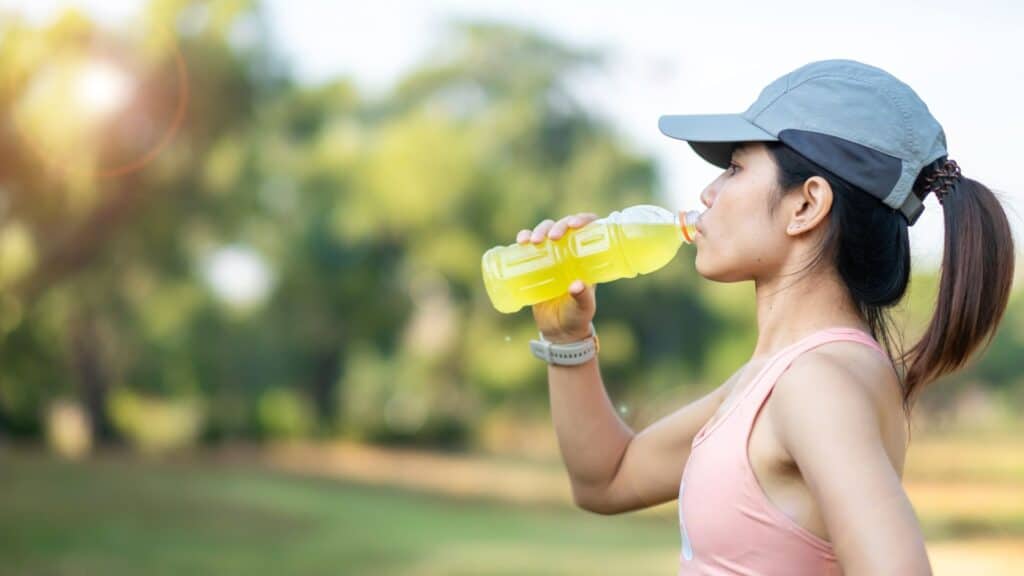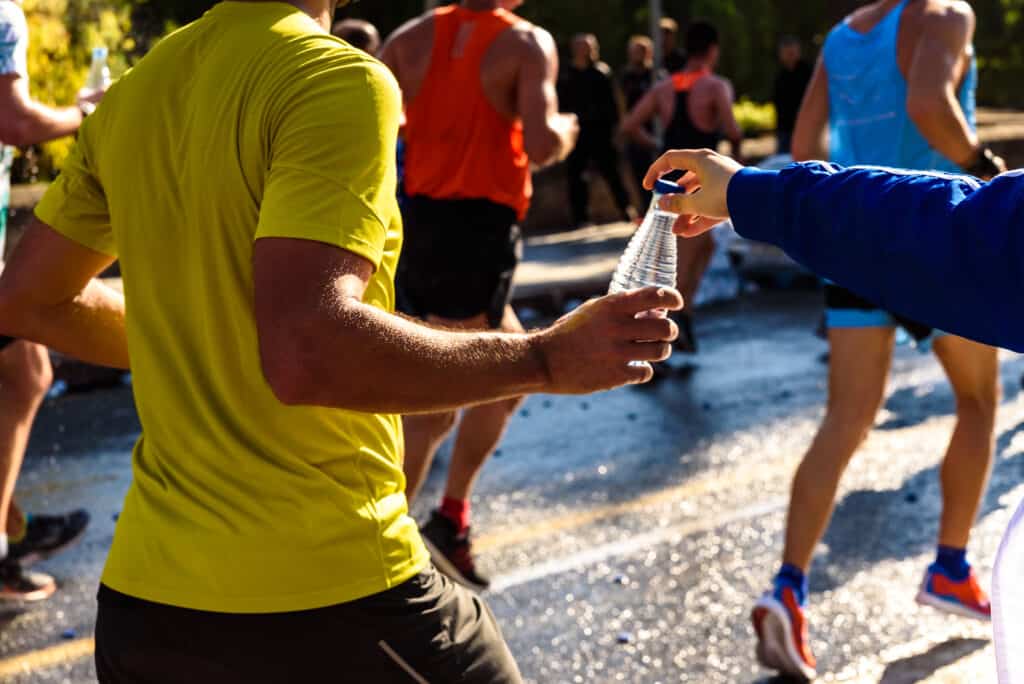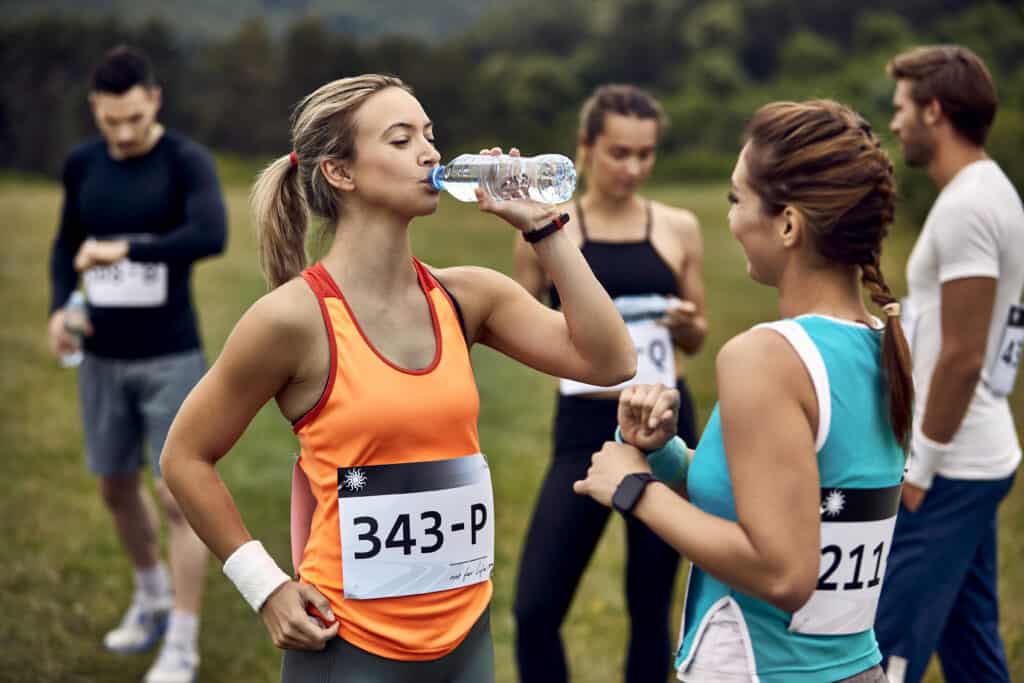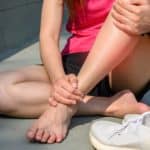The Boston Marathon is an iconic race that draws thousands of participants from around the world.
One of the key elements that contribute to the success and experience of the runners at the Boston Marathon is the strategically placed aid stations.
These stations offer hydration options like water, sports drinks, and even Mautren energy gels at selected stations for sustained energy levels. Additionally, medical personnel are present at the aid stations to assist with any injuries or medical concerns.
The aid stations also go beyond basic needs by offering amenities such as sunscreen, vaseline, and sponges soaked in cold water for runner comfort. It’s important to take advantage of these resources and show gratitude to the dedicated volunteers who make the aid stations possible.
In this article, we will explore in detail what runners can expect at the aid stations during the Boston Marathon 2026, and where to find them.

Notably, the aid stations are also some of the spots where you will receive some of the best support on the course, with passionate cheering at each one.
Now, let’s start with the hydration options available…
Disclaimer: The following information was accurate at the time of writing and may be subject to change with potential updates to sponsors or available hydration options.
Water Stations On The Boston Marathon Course
According to data from previous years of the Boston Marathon, water stations will be strategically placed along the course, starting at Mile Two (3.22 km).
When you reach the water stations on the Boston Marathon route, you can expect to find a variety of hydration options, including:
- Poland Spring Water
- Lemon Lime Gatorade Endurance
Refreshing Hydration: Poland Spring Water
Stay hydrated with the crisp and pure taste of Poland Spring Water. Quench your thirst and replenish your body’s fluid levels as you tackle the marathon course.
Endurance Boost: Lemon Lime Gatorade Endurance
Power up your performance with Lemon Lime Gatorade Endurance. This specially formulated sports drink provides electrolytes and carbohydrates to help sustain your energy throughout the race.
These hydration options are carefully selected to support the specific needs of marathon runners and ensure that you stay hydrated and fueled for optimal performance.
Now, let’s have a look at the diverse fueling options available…
The water and Gatorade are provided in large cups, which make it messy and hard to consume so be sure to practice taking in water from a cup at high speed in training 🙂
Food Stations Along The Boston Marathon Route
Three Maurten Energy Gel stations will be located on the course to offer runners an additional fuelling option at specific points:
- Mile 11.8 (19 km) on the Wellesley town line,
- Mile 17 (27 km) in Newton, and,
- Mile 21.5 (27 km) just after Boston College.
These are stocked with the highly regarded Maurten Gel 100 and Gel 100 CAF 100 choices.
These gels are specifically formulated to optimize carbohydrate absorption, allowing your body to efficiently convert them into usable energy.
Toilets Along The Boston Marathon Route
To ensure your convenience and comfort during the race, the Boston Athletic Association (B.A.A.) has made arrangements for toilets at every water and medical station along the course.
Additionally, there are extra toilet facilities located at various points to accommodate the needs of participants.
It is important to show respect for the communities hosting the Boston Marathon by utilizing these facilities when necessary. Please take advantage of these amenities to maintain a positive race experience for everyone involved.
After the 2023 edition, there was footage of a runner making use of someone’s garden in Hopkinton, this is wholly unnecessary as there are hundreds of portable toilets both at the runners’ village and between the village and the race start.

Course Clocks and Mile/Kilometer Signage
To help runners stay informed about their progress, the Boston Marathon provides digital clocks strategically placed at every 5K mark and important mile locations.
These clocks display the unofficial running time from the 9:00 a.m. start.
This is a massive difference from early editions when runners had to rely on the clock towers in the towns that run along the Boston Marathon route.
Drop Out: Assistance and Direction for Unfinished Races
If circumstances prevent a runner from completing the marathon, there are provisions in place to ensure their well-being and offer guidance.
Along the course, there are 26 medical stations where runners can seek assistance and directions. Sweep buses are available at each medical station to transport runners to the Finish Area medical tent.
Aid Station and Finish Area Closure: Timely Operations
Throughout the day, aid stations along the course operate on staggered schedules. As the race progresses, these stations gradually close to accommodate the pace of the event.
Additionally, the finish area facilities officially close at approximately 5:30 p.m.
Course Closure: Transitioning to Reopen the Roads
At a certain point in the marathon, race officials determine that it is time to reopen the roads for regular traffic.
Runners who are still on the course when this decision is made, typically maintaining a pace slower than approximately 14:23 minutes per mile, are instructed to move to the right side of the road.
Support for Slower Runners: The Rear Team of Cyclists
Acknowledging the commitment and perseverance of runners who maintain a pace at or slower than 14:23 minutes per mile, the Boston Athletic Association (B.A.A.) has a dedicated team of cyclists.
These cyclists ride behind the pack, offering support and assistance as needed.
Having familiarised ourselves with the amenities and offerings along the route of the Boston Marathon, it is equally important to understand what items and actions are prohibited on race day.
What You’re Not Allowed To Bring To The Boston Marathon
To ensure a safe and smooth experience for all participants, certain restrictions are in place.
Let’s take a closer look at what you should avoid bringing or engaging in during the marathon.
- Weight vests or any sort of vest with pockets or water bladders.
- Guns, knives, or any item that may be used as a weapon.
- Backpacks, any similar item carried over the shoulder, or handbags of any size.
- Props (including sporting equipment, military and fire/gear, and signs or flags* larger than 11 inches x 17 inches).
- Glass containers.
- Any container capable of carrying more than one liter of liquid.
*Note – Flags cannot be on a pole longer than 15 inches in length
See the full list on the official Boston Marathon website.
What Is The Best Way To Hydrate During The Boston Marathon?
If you fail to adequately prepare your hydration strategy before the Boston Marathon, it can have some unwanted consequences.
When you become dehydrated, your aerobic energy capacity decreases, resulting in reduced exercise endurance and muscle strength.
To stay properly hydrated, it’s generally recommended to aim for consuming 200-600ml of water per hour.
However, keep in mind that this amount can vary based on factors such as your individual needs, exercise intensity, and environmental conditions. Ensure that you practice what works for you before race day.
Listen to your body’s thirst cues and adjust your fluid intake accordingly.
It’s important to note that over-hydration (hyponatremia) poses a greater risk than dehydration. So, drink in moderation, and if you feel thirsty, you can slightly increase your fluid intake as you go.
During your training period, especially on your long runs, we strongly advise you to determine how much water your body requires to maintain proper hydration. This will help you perform at your best on race day.
To ensure proper hydration, you can monitor your weight before and after a long run, making sure that you haven’t lost more than 2 percent of your body weight.
Additionally, check the concentration of your urine to gauge your hydration status.
When it comes to the water stations and Gatorade provided along the course, they aren’t meant for you to stop at every single one.
Instead, consider the amount of fluid you consumed during your long training runs and aim to replicate that intake during the Boston Marathon, adjusting based on your thirst and the environmental conditions.
Remember, during the race, only stop at the designated stations for drinks and fuel, as you have planned and practiced during your training.
Pro Tip: Experts recommend the best marathon hydration strategy for optimal performance.
Now, let’s address a common question…
Should You Bring Your Water To The Boston Marathon
Yes, if you prefer carrying your water, you are allowed to bring your own water bottle.
However, it’s important to note that participants are only permitted to carry a one-gallon clear plastic bag specifically for food items or sports drinks.
This bag is subject to search, and each runner is limited to one clear plastic bag pack. You will receive a clear, one-gallon plastic bag in your participant packet, but you can also use your own one-gallon bag.

Why You Can’t Run The Boston Marathon With a Hydration Pack?
Hydration packs, such as Camelbaks, are not permitted at the Boston Marathon due to security concerns.
These packs have multiple compartments that could potentially conceal prohibited items or substances, posing a risk to the safety and security of the event
Now that you know what you can and cannot bring to the Boston Marathon, we’ve got some tips for you to enhance your efficiency at the drink and fuel stations during the marathon.
Tips For Efficiency At Boston Marathon Drinks And Fuel Stations
- Stick to your plan: Only stop at the stations if it aligns with your race strategy.
- Plan ahead: Look ahead and position yourself on the correct side of the road before reaching the stations to avoid unnecessary weaving.
- Slow down: Reduce your pace slightly when approaching the volunteers handing out water or Gatorade to ensure a smooth exchange.
- Sip, don’t gulp: Drink slowly to avoid discomfort and allow your body to absorb the fluids effectively.
- Dispose of trash responsibly: Be mindful of where you discard your cups or packaging along the route, keeping the course clean for everyone.
- Cool down: On hot days, consider pouring some leftover water on your neck or head to help regulate your body temperature.
- Most people go for the first table, so you are forced to stop and scramble for drinks. Aim to go to the tables at the tail end of the station to reduce congestion at the start.



Comments are closed.